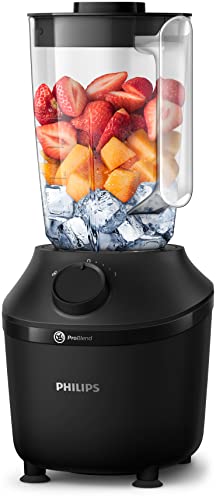Yes, a Blender Can Be Used for Grinding Coffee Beans
Many coffee lovers are constantly on the lookout for ways to grind their coffee beans at home. While there are various specialized devices available in the market for grinding coffee, not everyone wants to invest in such equipment. This is where the versatility of a blender comes in. Although primarily used for blending and pureeing ingredients, blenders are capable of grinding coffee beans if used correctly. In this article, we will discuss how you can use a blender to grind coffee beans and some tips to achieve the desired consistency.
The Right Blender for Grinding Coffee Beans
Not all blenders are created equal, and some may not have the power or design suitable for grinding coffee beans. When using a blender for grinding coffee, it is important to select a blender with a powerful motor and a sturdy design. Blenders with high-speed motors tend to be more effective in grinding solid ingredients. Additionally, blenders with a durable blade attachment made of stainless steel can efficiently break down the coffee beans. It is recommended to opt for a blender with a minimum power rating of 500 watts to ensure effectiveness in grinding coffee beans.
Steps to Grind Coffee Beans in a Blender
Grinding coffee beans in a blender is a relatively straightforward process. Following these steps will help you achieve the desired grind consistency:
- Start by selecting the right amount of coffee beans for your desired brew.
- Measure the beans according to your coffee-to-water ratio.
- Place the measured coffee beans into the blender jar.
- Avoid overloading the blender, as it may hinder the grinding process.
- Secure the lid tightly on the blender jar to prevent any spillage.
- Start with a low speed setting and gradually increase the speed for finer grind consistency.
- Blend the coffee beans in short bursts rather than continuous blending to avoid overheating.
- Check the grind consistency periodically to determine if additional blending is required.
- Once you achieve the desired grind consistency, stop blending.
- Transfer the ground coffee to an airtight container for storage.
Tips for Grinding Coffee Beans in a Blender
Here are some additional tips to ensure a successful grind when using a blender:
- Freeze the coffee beans for a few minutes before grinding to make them easier to break down.
- Pulse the blender instead of continuous blending to avoid overheating the beans.
- Avoid grinding coffee beans in large quantities to ensure consistent results.
- Clean your blender thoroughly after grinding coffee beans to remove any residue that may affect future blends.
- Experiment with different speed settings and blending durations to find the perfect consistency for your preferred brewing method.
Alternative Methods for Grinding Coffee Beans
While a blender can be an effective tool for grinding coffee beans, there are alternative methods you can consider if you do not have access to a blender or prefer a different approach:
- Coffee Grinder: A dedicated coffee grinder is specifically designed for grinding coffee beans and usually offers more control over the grind consistency. It may be a worthwhile investment for serious coffee enthusiasts.
- Mortar and Pestle: This traditional method involves manually grinding the coffee beans using a mortar and pestle. While it requires more effort, it allows for precise control over the grind consistency.
- Manual Burr Grinder: Similar to a coffee grinder, a manual burr grinder allows you to adjust the grind size and provides a consistent result. It operates by manually rotating a burr mechanism to crush the coffee beans.
In conclusion, a blender can indeed be used for grinding coffee beans. By choosing the right type of blender with enough power and following the proper steps, you can achieve the desired grind consistency for your coffee brewing needs. However, it is essential to keep in mind that blenders are primarily designed for blending, and using them for grinding coffee beans may not yield the same level of precision as dedicated coffee grinders or other manual methods.



![Breville Blend Active Personal Blender & Smoothie Maker | 350W | 1 Portable Blend Active Bottle (600ml) | Leak Proof Lid | Black & Gold [VBL251]](https://m.media-amazon.com/images/I/41PbM+z41gL.jpg)


